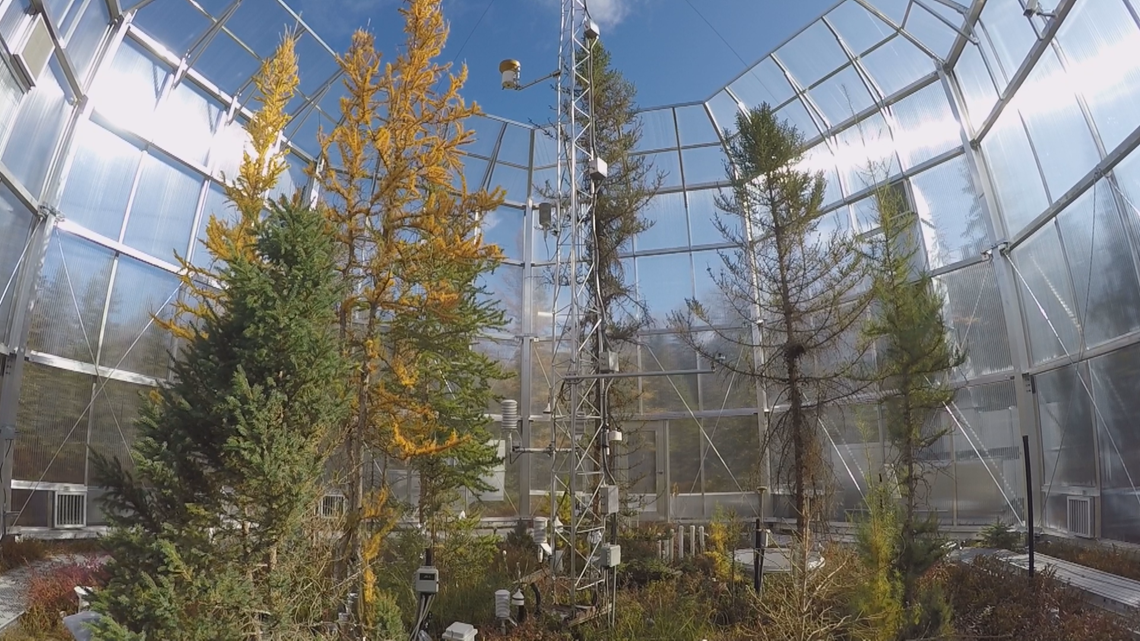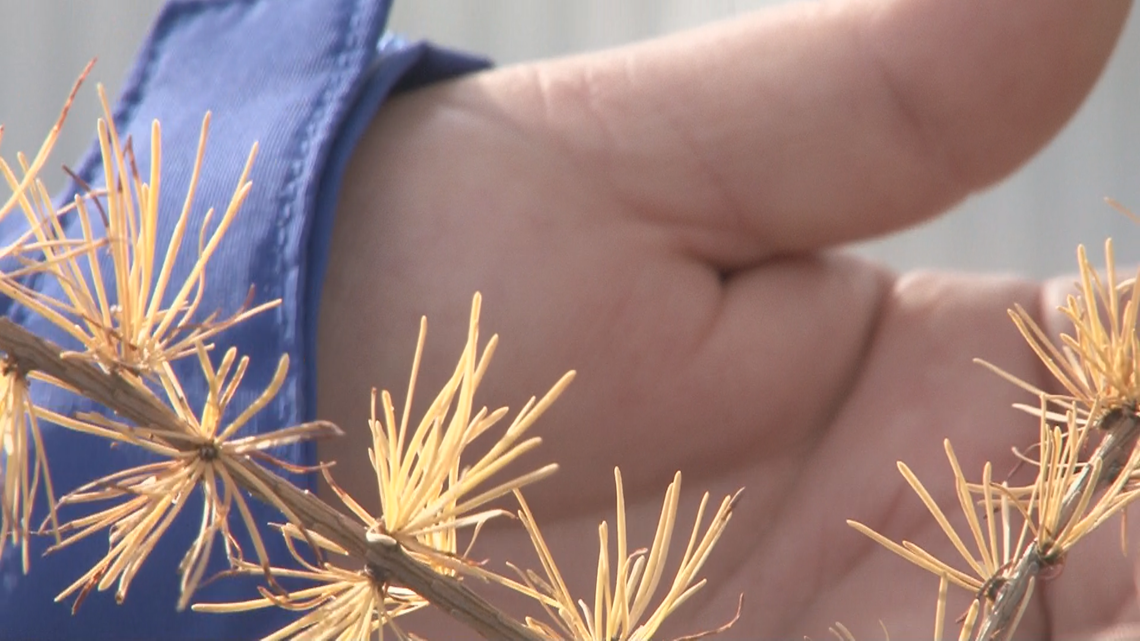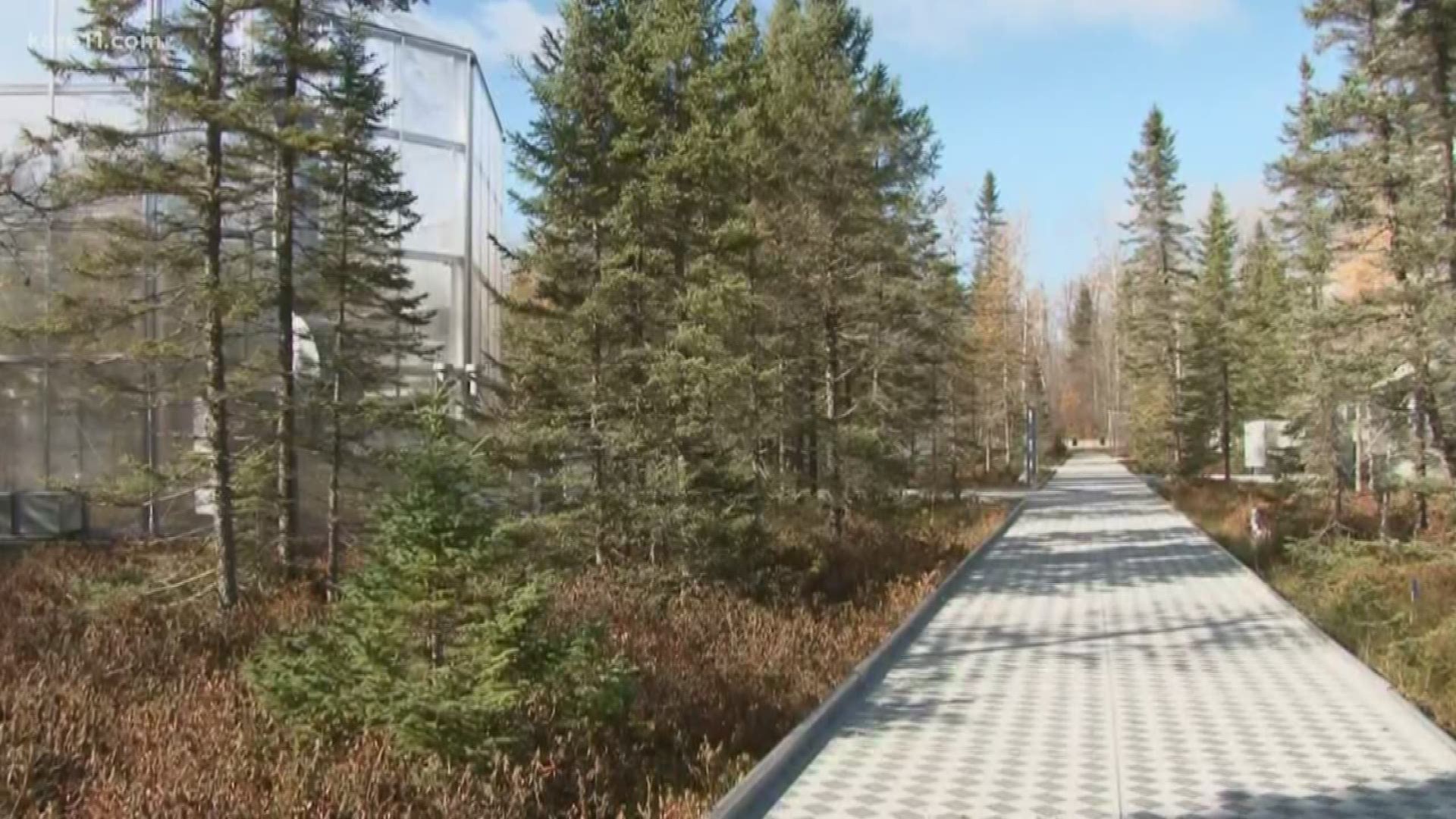GRAND RAPIDS, Minn. — The forest about a half hour north of Grand Rapids is quiet, with a narrow dirt road winding between tall trees. A small sign reading "Marcell Experimental Forest" is the only indication to people passing by of the experiment tucked a few miles back, which could have global implications.
"It's the only place on the planet that's simulating climate change to the degree that we think it's [actually] going to happen," said Randy Kolka, a research scientist with the USDA Forest Service, "And it's right here in northern Minnesota."
The experiment is called SPRUCE. It stands for Spruce and Peatland Responses Under Changing Environments Experiment. It's funded by the US Department of Energy and is a collaboration between the USDA Forest Service and Oak Ridge National Laboratory.
The researchers are looking into the impact warming temperatures will have on the ecosystem of northern Minnesota. They built ten, 30-foot tall, open-top chambers. Eight of those chambers are being warmed, both above and below ground. The other two are controls. Half of the chambers also have elevated levels of carbon dioxide.
The idea is that the ecosystems within a given chamber will give a glimpse into what the future could hold, if temperatures warm to that degree.


Just a few years in to the decade-long experiment, Kolka says they're already seeing the effects of the warming temperatures on plant life in the chambers - and they're not good.
In the "middle of the road" chamber, warmed to about four degrees Fahrenheit above the normal temperature, the increase Kolka says Minnesota is projected to see by the year 2100, the tamarack trees which should have lost their needles by now, still have them.
"This one is probably about two to three weeks behind at this point," said Kolka of the tree in the chamber. "They still think it's too warm to drop their needles."


In the most extreme chamber, warmed to about 16 degrees Fahrenheit above the normal temperatures, shrub growth has exploded, shielding and killing the moss which is essential to the peatland ecosystem. A black spruce tree in the chamber is nearly dead.
"The trees are going downhill fast," Kolka said. "The changes to the plant community are like the canary in the coal mine. Once you start seeing changes to the plant communities, you can expect to see bigger changes up the ecosystem scale."


Kolka said this part of northern Minnesota was ideal for the experiment because the peat in the forest holds massive amounts of carbon. When warmed, it releases carbon dioxide and methane, the two primary greenhouse gases.
That's where the most surprising finding to Kolka and other researchers comes into play. In the most extreme chamber, the warm temperature has caused the peat to go down by about two inches, disappearing into the atmosphere as greenhouse gases.
"That might not seem like a lot," Kolka said. "[But] it takes several hundred years to accumulate two inches of peat, [and] we've just blown it off in four years or less."
That's significant because for centuries peatlands around the world have held onto carbon, acting, as Kolka describes, as "sinks." But when they're warmed, they let go of that carbon, which turns into greenhouse gases, becoming instead "sources" of carbon, Kolka said.
"If [the peatlands] start flipping from carbon sinks to sources, it's going to affect the whole planet," Kolka said.
That, Kolka said, creates a sort of domino effect.
"As climates warm, more and more carbon is going to be coming out of these ecosystems, and as more carbon comes out of these ecosystems, it's going to acerbate climate change, because the greenhouse gases will increase the amount of warming," he said.

